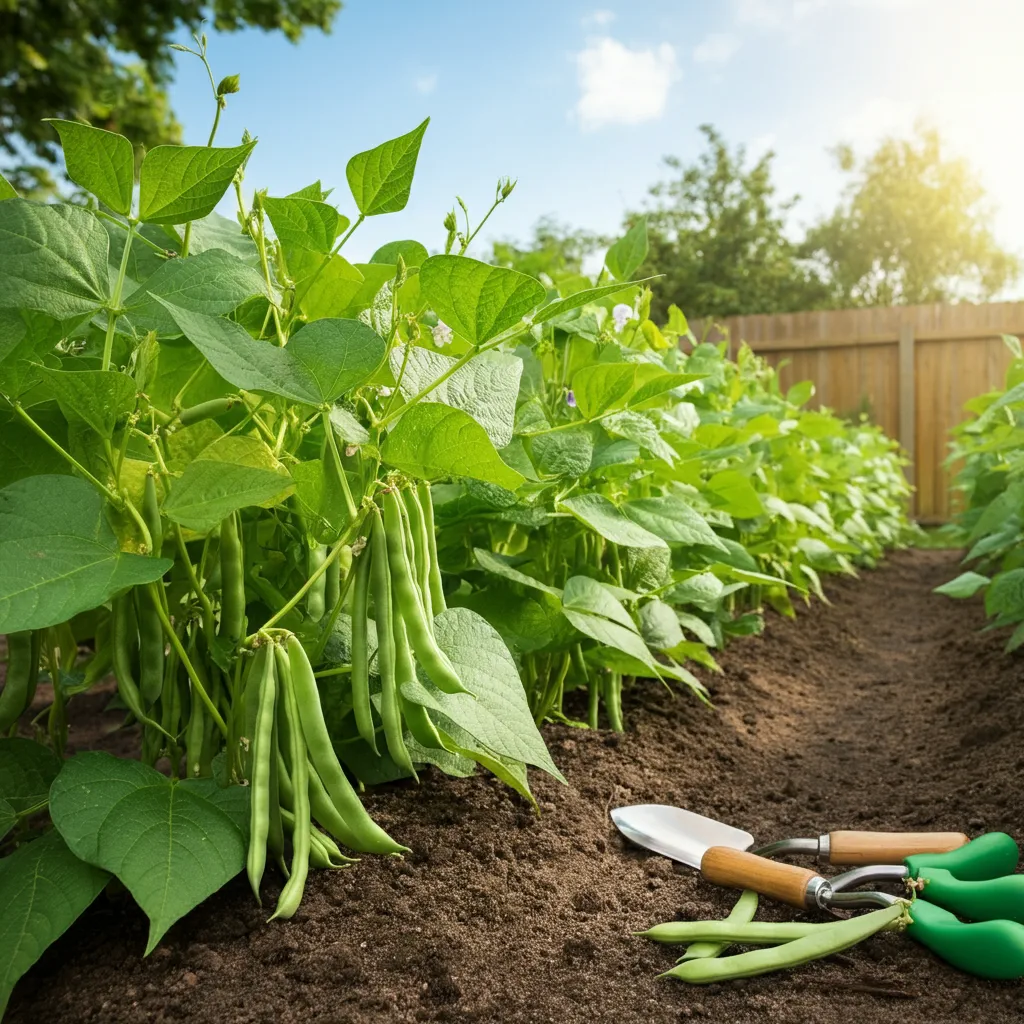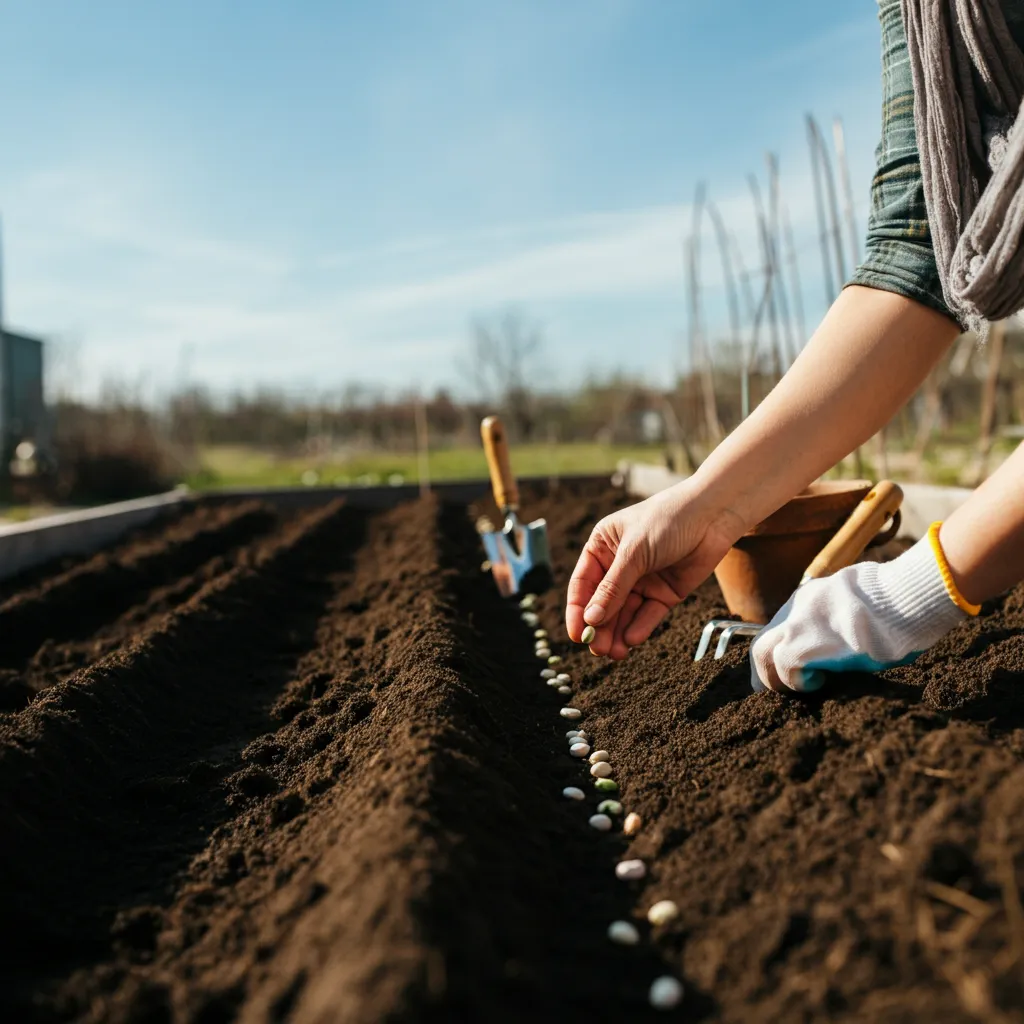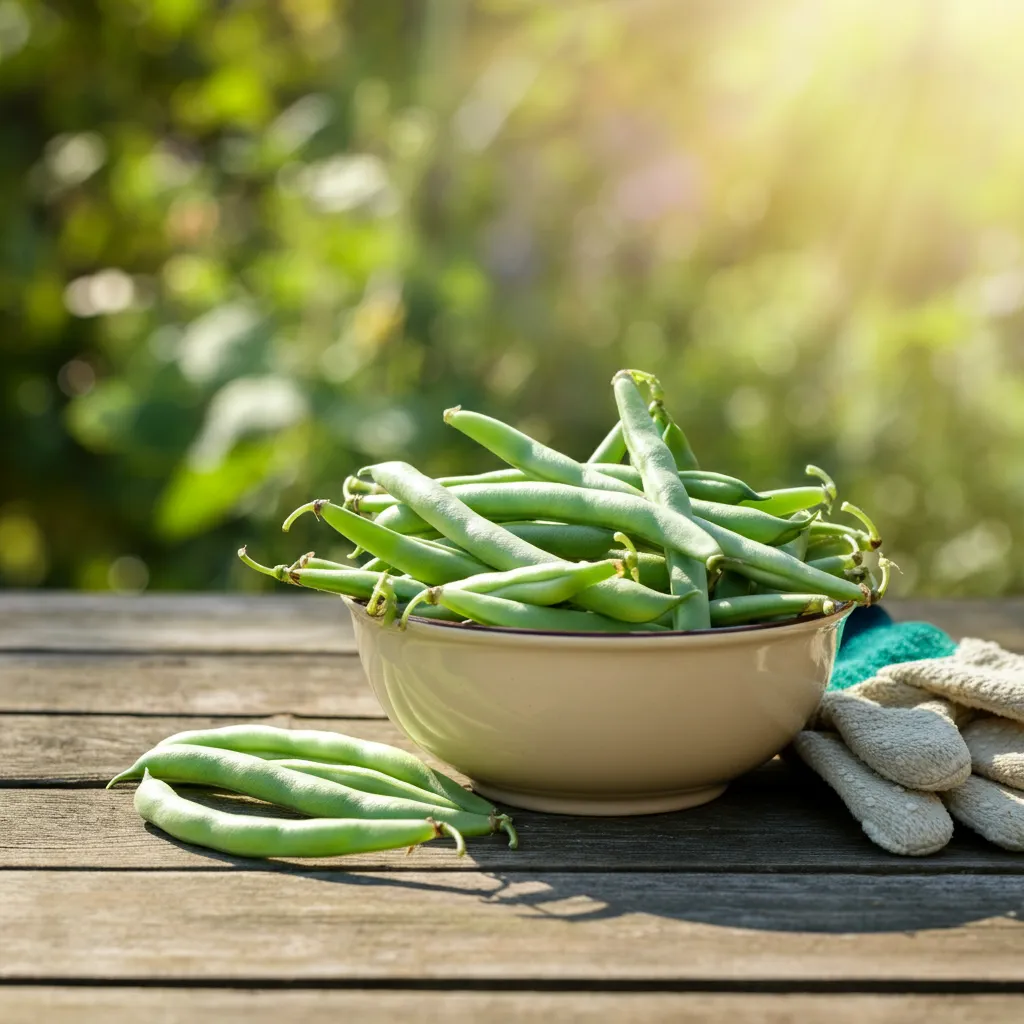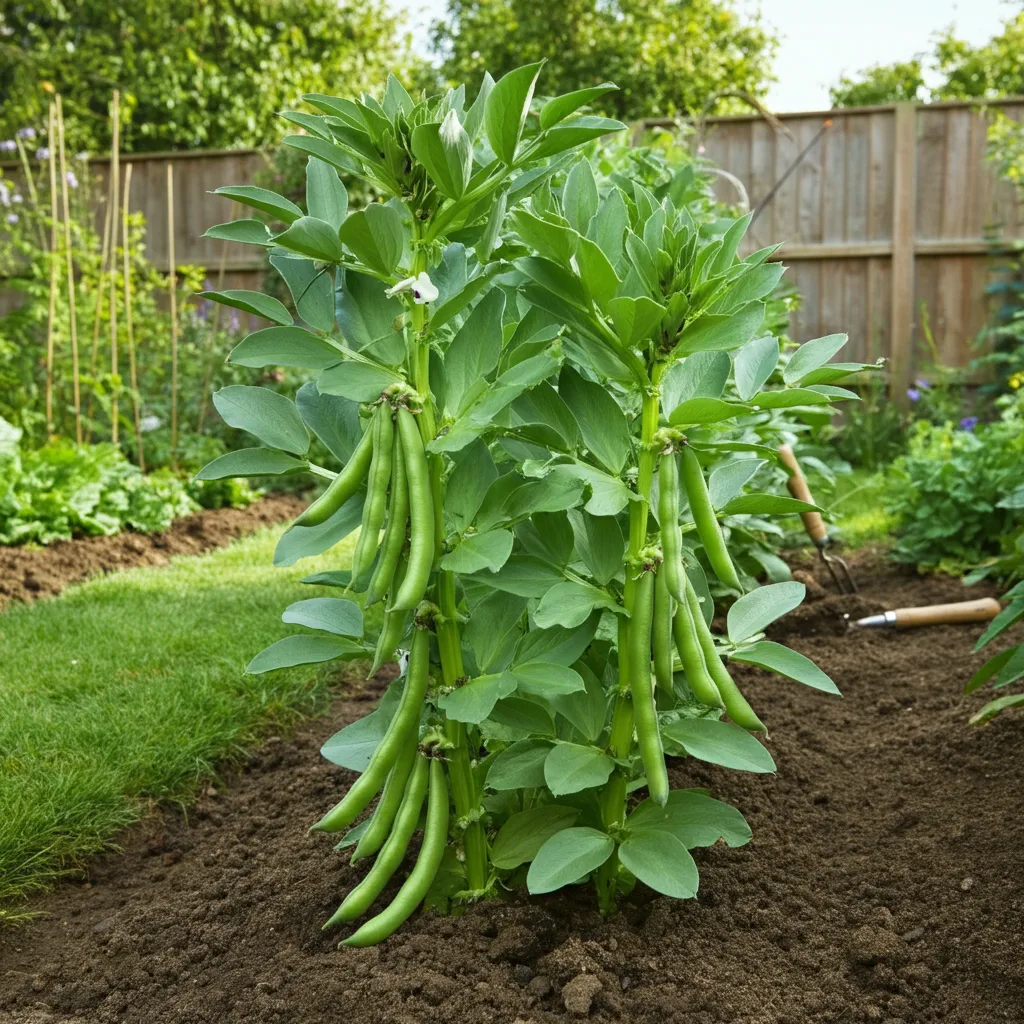Field Beans vs Broad Beans: A Gardener's Guide
For centuries, the humble bean has been a cornerstone of UK gardening, cherished by British gardeners and allotment holders alike. These hardy legumes play a crucial role in numerous planting guides and have sustained families while nourishing soils for generations. Yet many UK gardeners find themselves puzzled by a common question: what's the real difference between field beans and broad beans?
If you've ever wondered whether field beans and broad beans are simply different names for the same plant, you're not alone. Though both belong to the same plant family and share similar growing requirements, they each possess unique characteristics that set them apart. Field beans, especially, deserve attention from UK gardeners for their outstanding hardiness and the rewards they bring to any planting guide.
This comprehensive guide provides tailored gardening advice for growing field beans and broad beans in UK gardens. You'll learn step-by-step field bean and broad bean planting techniques, effective growing tips, and the best harvesting techniques for a bountiful crop. Most importantly, you'll understand the differences between field beans and their popular cousin, the broad bean, and why field beans might be the ideal addition to your vegetable patch.
What's in a Name? Field Beans vs Broad Beans
Field beans (Vicia faba var. minor) are the resilient, smaller-seeded variety within the broad bean family—standouts in both cover cropping and culinary circles. Traditionally grown as a green manure or for animal feed, field beans are now increasingly appreciated for their robust flavour, ease of cultivation, and unique advantages in UK gardening.
Broad beans (Vicia faba var. major), on the other hand, are known for their plump, large seeds and their much-loved presence in UK allotments and gardens. These are the familiar beans that bring a summertime harvest to British tables.
Field Beans vs Broad Beans at a Glance:
- Seed Size: Field beans yield smaller seeds than the larger, chunkier broad beans.
- Plant Structure: Field beans are compact and manageable, while broad beans tend to tower a bit more with a bushier habit.
- Hardiness: Field beans excel as the hardy heroes of UK gardening, often outperforming broad beans at overwintering—making them a star in any planting guide.
- Traditional Use: Field beans have served as animal feed and soil improvers but now enjoy renewed popularity as a food crop. Broad beans are usually grown for their fresh, sweet flavour in human diets.
Despite their differences, both types have similar sowing, growing, and harvesting needs, letting UK gardeners use similar growing tips for each.
Getting Started: How to Plant Field Beans
Timing Your Sowing
For UK gardeners, field beans offer two main sowing windows, each presenting strategic advantages. In any planting guide, timing is everything:
- Autumn Sowing (October–November): Exploit field beans' renowned cold resistance for strong overwintered crops. This approach yields earlier harvests when homegrown vegetables are especially prized.
- Spring Sowing (February–April): Perfect for Scotland or colder UK regions, or if you prefer a later harvest. Spring sowing also allows for staggered cropping with broad beans.
Choosing the Perfect Spot
Select a sunny, sheltered area with well-drained soil—essential in UK gardening. Field beans excel at nitrogen fixation, enriching your garden's soil ahead of needy crops like brassicas or potatoes.
Avoid waterlogged or heavy clay locations, even when growing these hardy plants. Raised beds, gentle slopes, or improved drainage are top growing tips for success.
Sowing Technique
Use a hoe or trowel to create drills roughly 5cm (2in) deep. Sow field bean seeds 10–15cm (4–6in) apart in the row and keep 25cm (10in) between double rows for optimal growth. Cover the seeds, gently firm the soil, and water well—a classic tip in any UK field bean planting guide.
Label your rows clearly. Germination is steady but can be slow after autumn sowing.
Nurturing Your Crop: Growing & Feeding Your Beans
Watering Wisdom
Consistent watering is key to vigorous field beans and broad beans, especially during flowering and pod formation. During dry spells, water deeply once a week for strong roots—this is a proven growing tip.
Monitor your plants: wilting leaves or sparse pods signal water stress. Yet, avoid overwatering, which hampers bean yields and can trigger root rot.
Supporting Your Plants
Although field beans are naturally compact, exposure to strong UK winds sometimes calls for extra support. Bamboo canes with string at 30cm (12in) intervals create a practical support frame—vital in your field bean or broad bean growing toolkit.
Autumn-sown beans are most in need of such help, facing blustery weather before roots are fully established.
Feeding for Success
Field beans are true friends of UK soil thanks to their nitrogen-fixing talents. There's usually little need for extra feed, except a high-potash supplement—try comfrey tea or diluted tomato fertiliser when flowers emerge. This enhances pod formation and overall crop yield.
Sprinkle wood ash sparingly around plants, especially for autumn sowings—another gardener-approved nutrient boost.
Pest Management
Blackfly aphids are notorious foes of both broad beans and field beans in the UK garden. Protect your crop by pinching out the tender tips as soon as the first pods set. Not only does this deter aphids, but those young greens are a culinary bonus. Cook them lightly for a nutritious treat.
The Best Part: How to Harvest Field Beans
Recognising Readiness
Mastering harvesting techniques ensures peak flavour and yields from your field beans. Harvest pods when they feel well-filled and the seams become prominent. A gentle shake will sometimes reveal a satisfying rattle when beans are ready for picking.
Pick pods from 10–15cm (4–6in) in length, depending on your taste. Young pods are sweet and entirely edible, while mature pods deliver hearty, flavourful beans—ideal for classic British recipes.
Harvesting Technique
Start low: pods at the base ripen first. Support the stem with one hand, twist and pull with the other—this gentle harvesting technique preserves your bean plants’ integrity and stimulates further bean production.
Pick every couple of days for the best results and prevent pods from becoming tough or starchy.
Maximising Your Harvest
Regular picking, called successional harvesting, keeps your plants in full production for weeks on end. Don’t let the pinched-off tips go to waste—they’re just as tasty as the beans themselves!
Extending the Growing Season
Field beans shine in any UK growing guide for their ability to extend the season. Autumn-sown field beans fill the “hungry gap,” providing fresh beans as winter stores dwindle and before broad beans or summer crops mature.
Sow field beans every two weeks from February through April for steady harvests—one of the most reliable growing tips for UK gardeners. After the final harvest, cut plants at ground level; leave roots to decompose, naturally boosting soil nitrogen for the next crop.
Why Field Beans Deserve a Place in Your Garden
Gardeners across the UK are rediscovering field beans’ remarkable benefits. These hardy plants deliver abundant, nutritious food, require minimal maintenance, and improve soil fertility for future plantings.
Field beans provide a winning combination of resilience, taste, and sustainability—qualities prized in all UK gardens. Their compact size, forgiving nature, and reliable yields make them perfect for new and experienced gardeners alike. And with their role as a nitrogen-fixer, every crop leaves your soil richer for next year’s planting.
Give field beans a try—whether on an allotment, in a vegetable bed, or even a balcony container. Not only will your soil and wallet thank you, but your kitchen will also benefit from delicious harvests that keep on giving. UK gardening is all about embracing versatility, and field beans deliver just that.















Community Feedback